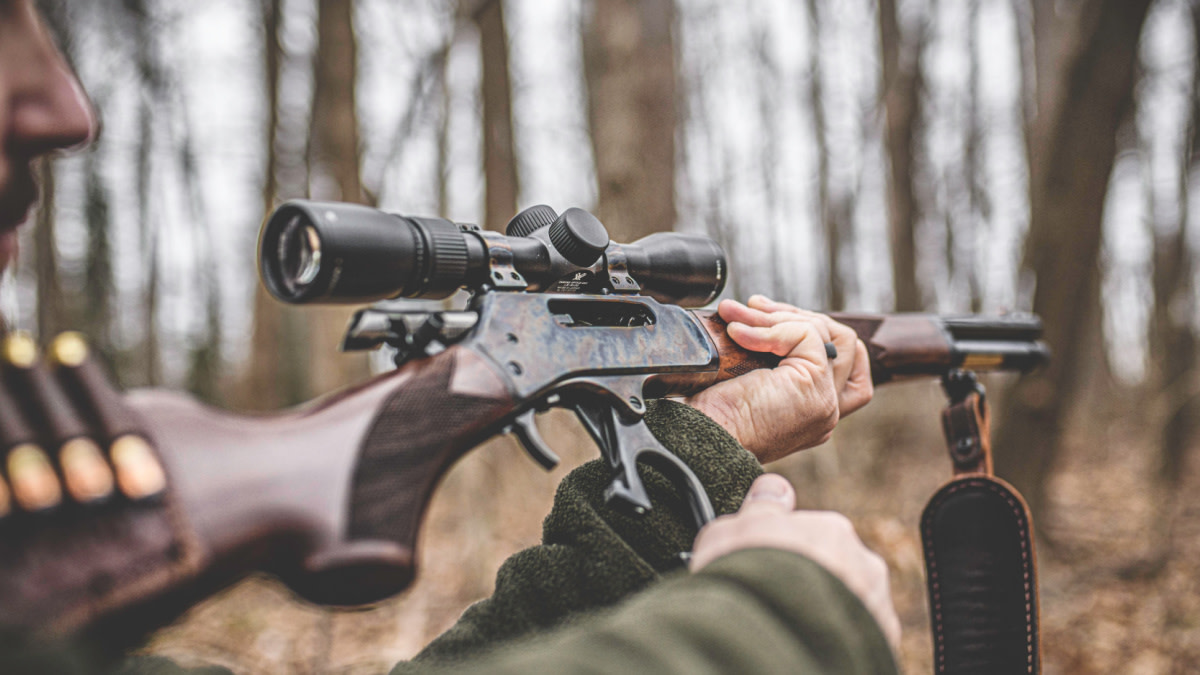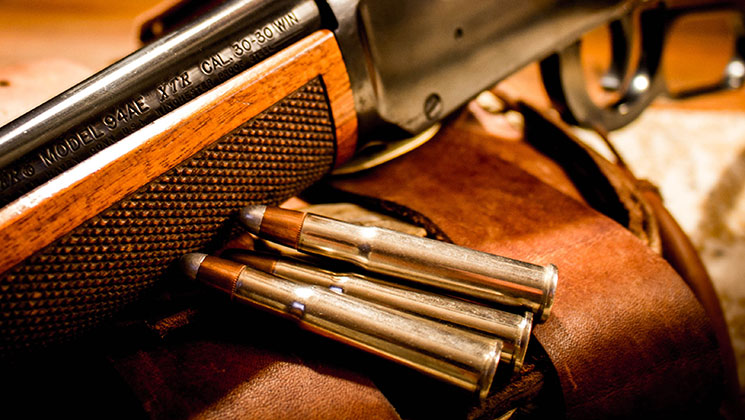
A younger generation of shooters is wrong to think that old-style lever-action rifles are old school and simply hearken to the old West.
These are bonafide hunting rifles that have the respect of those that really know how to hunt. These rifles come chambered in all calibers, from the sporty .22 Long Rifle to the huge 45/70 Government.
A lever gun rifle is infinitely versatile.
Ever since the mid-century as Marlin began chambering the Model 336 in .35 Remington, there has been a rivalry over whether it is a superior lever-gun cartridge compared to the .30/30 Winchester.
The debate between 30-30 Winchester and 35 Remington continues unabated.
With both cartridges being extremely popular for hunting and shooting recreationally, it’s important to know the pros and cons of each.
Here is a look at the key differences between the two cartridges.
The Legendary Marlin 336 Rifle
Credit the Marlin 336 is the rifle for starting the rivalry. With options in .30/30 Winchester and .35 Remington, outdoorsmen have debated for more than 5 decades which one is king.
Read articles: The 270 Winchester vs 6.5 Creedmoor
Read articles: The 7mm Rem Mag vs 300 Win Mag
The .30/30 Winchester came into the gun world in 1895. Winchester’s model 1894 lever-action rifle is no doubt the most iconic lever rifle. At the onset, it was loaded with a 160-grain bullet.
The modern variant has 150- and 170-grain loads.
There are even models with ammunition loads of bullets that are 125 grains, all the way to a heavy 190 grains. The .30/30 is arguably the most versatile rifle.
It is a favorite among lawmen and professional hunters as well. In contrast, the .35 Remington’s background is a bit different. It was chambered in Remington’s Model 8 auto-loading rifle.
Many think that this was fired into Bonnie and Clyde’s 1934 Ford In 1953. Ultimately, the cartridge was used in Marlin’s 336 lever-action.
It also was preferred by some that hunted big game with single-shot pistols. While a 150-grain spire point load was on offer, the usual load is a 200-grain round-nose slug.

The Harder Hitter – .30/30 Win. or the .35 Remington?
Bar none, the hardest, most powerful ammunition for the .35 Remington is the 220-grain “Heavy” load. It comes from Buffalo Bore.
However, experts will say that trajectory is an inaccurate way to rate cartridges at distances less than 150 yards.
The capacity to take down big animals is the true measure.
Due to its advantage to sustain velocity, the 160-grain LEVERevolution .30/30 load is likewise the hardest hitter. Measured at 100 yards it packs 1643 foot-pounds of pure lethal force.
Comparatively, the 35 Remington load that hits hardest is the 220-grain “Heavy” by Buffalo Bore. From 100 yards it was tracked with 1861 foot-pounds of awesome power.
Likewise, the 200-grain LEVERevolution .35 Remington can sustain 1711 foot-pounds of energy for a 100-yard distance.
Which Shoots More Flatly? The .30/30 Win. or the .35 Remington
These days the ammo for both cartridges is far better than the way they were in the 1950s.
Furthermore, the Hornady’s LEVERevoultion ammo drastically improves the range for the two cartridges.
When centered at 200 yards, the 160-grain FTX .30/30 Winchester drops afoot at a 300-yard distance.
Comparatively, the 200-grain LEVERevolution .35 Remington load drops 17 inches. The 30-30 propels the aerodynamically superior 30-caliber bullet faster for a flatter trajectory.

So What Wins as the Superior Lever-Action Cartridge?
Actually, a .30/30 vs. .35 contest has become an area thing. In the United States, particularly the east where deer and black bear are popular prey, the .35 Remington looks to be the first choice of weapon.
Hunters like it’s awesome stopping power. But that is not to say the .30/30 is not gaining ground. A new generation of hunters is apparently obsessed with shooting further.
Meanwhile, yonder in the west the .30/30 reigns supreme. Its flat trajectory allows shooters to aim well across open fields.
Arguably one would be hard-pressed to find ranchers that do not have a .30/30 lever-gun tucked away somewhere.
The .30/30′s superiority as a lever cartridge is also apparent when one checks available ammo. Gun retailers carry only four loads of the .35 Remington, comparing that to 35 choices for the .30/30.
Wherever you go, the .30/30 is the preferred big game hunting cartridge for lever-type rifles. Is that to say it is the better one?
In reality, the .35 Remington’s bigger diameter ammunition can drop the game faster and more impressively.
If you are in the sport to hunt bigger types of game or are perhaps a bit scared you might run into a stubborn black bear that puts up a fight, you will certainly find security with a rifle that has a bigger and heavier bullet.
However, if what you need is a lever-rifle cartridge ideal for big game hunting, self-defense or just surviving outdoors, the .30/30 is the better choice.
It is just a superior all-purpose weapon. This is owing in large part to the vastly more available and varied ammunition in the market.
The cartridge’s extended reach is also a definite advantage. So which one do you get? Well if resources permit, get one each!

